30+ SAMPLE Value Proposition Worksheet
-

Employee Value Proposition Worksheet
download now -
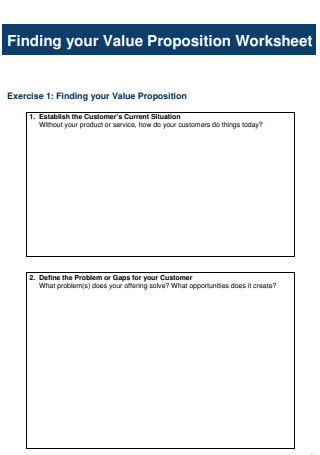
Customer Value Proposition Worksheet
download now -
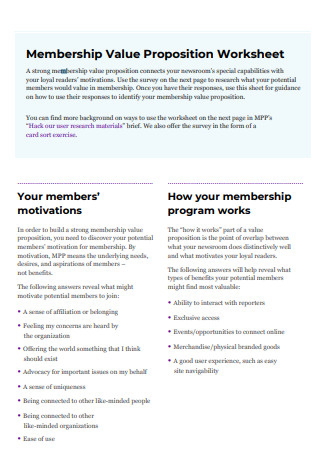
Membership Value Proposition Worksheet
download now -

Media Marketing Value Proposition Worksheet
download now -
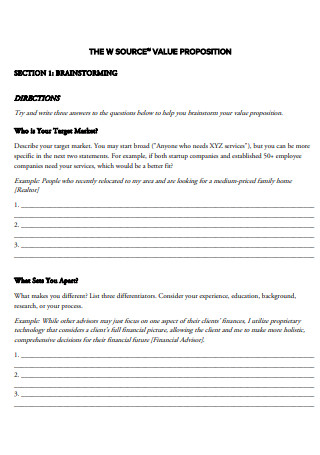
Value Proposition Worksheet
download now -
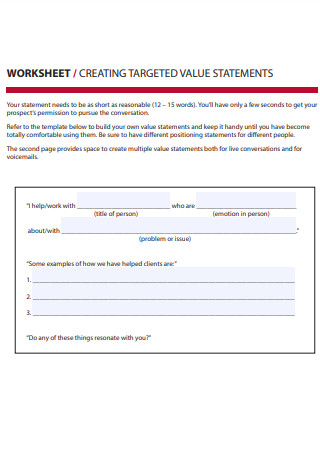
Targeted Value Propositions Worksheet
download now -
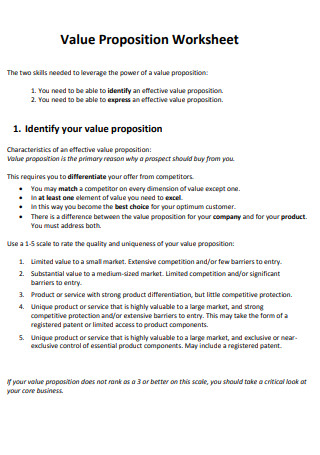
MarketingExperiments Value Propositions Worksheet
download now -
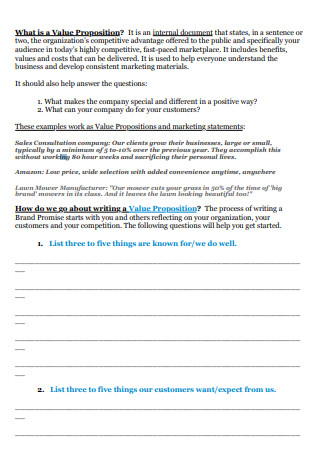
Value Propositions Worksheet Example
download now -
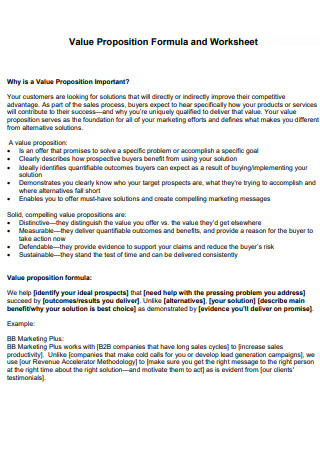
Value Propositions Formula and Worksheet
download now -
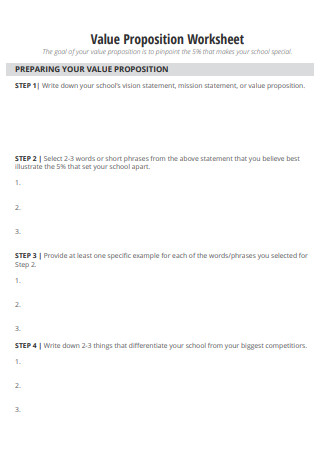
Value Propositions Worksheet for School
download now -
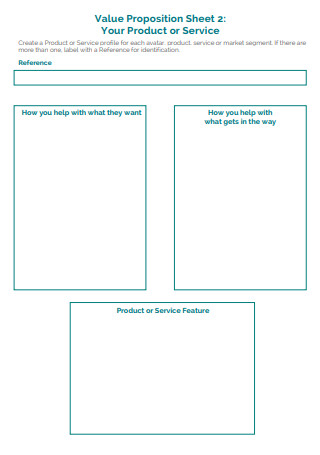
Sample Value Propositions Worksheet
download now -
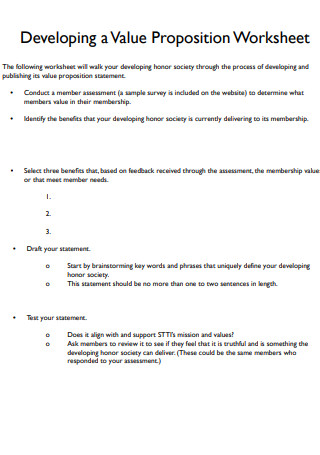
Developing Value Propositions Worksheet
download now -
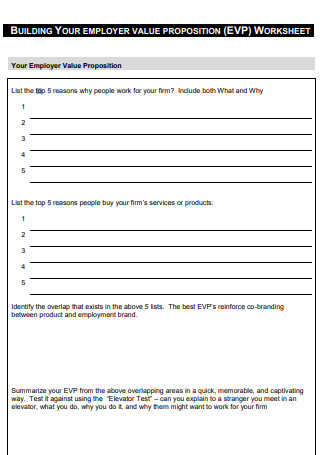
Building Employer Value Propositions Worksheet
download now -
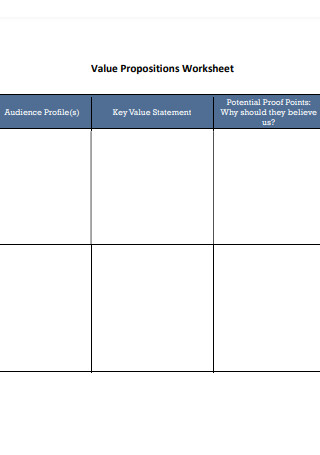
Value Propositions Worksheet Format
download now -
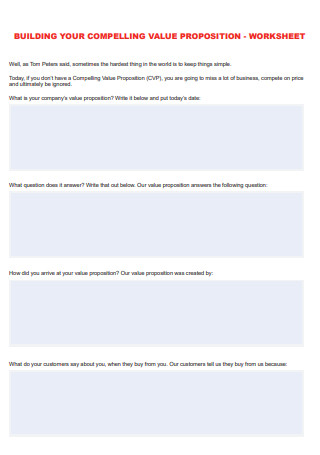
Compelling Value Propositions Worksheet
download now -
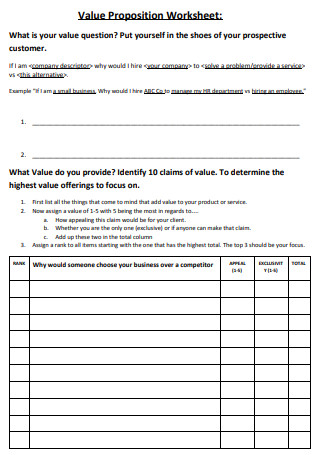
Unique Value Propositions Worksheet
download now -
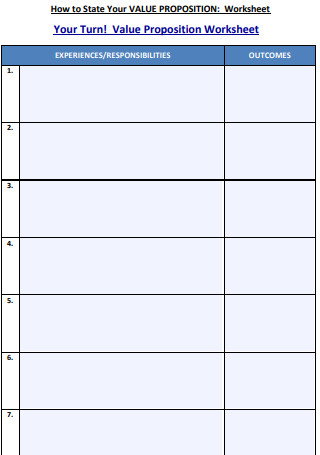
Value Propositions Worksheet Outcomes
download now -
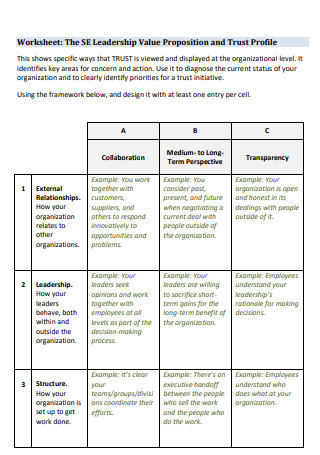
Leadership Value Propositions Worksheet
download now -
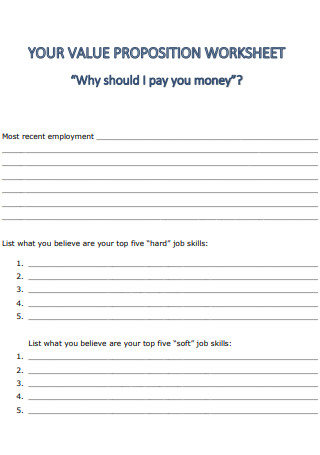
Value Propositions Worksheet Updated
download now -
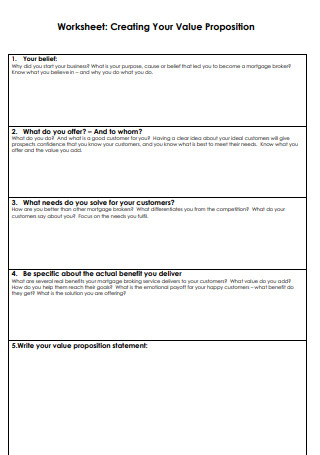
Creating Value Propositions Worksheet
download now -

Free Value Propositions Worksheet
download now -
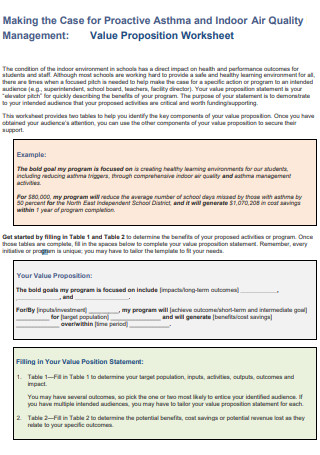
Indoor Air Quality Management for Value Propositions Worksheet
download now -
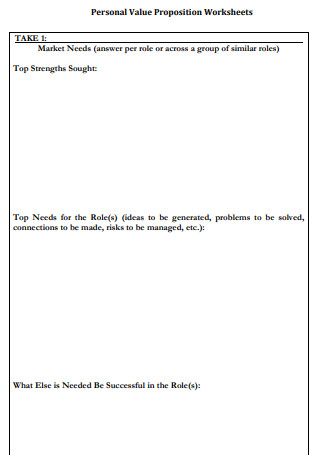
Personal Value Propositions Worksheet
download now -

3 Step Evaluation Process for Value Propositions Worksheet
download now -
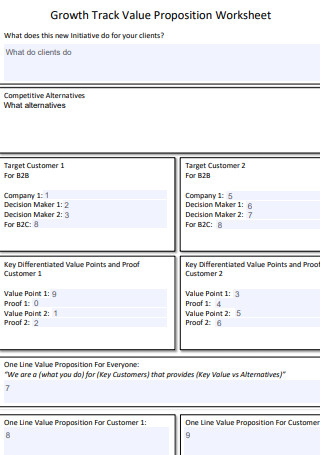
Growth Track Value Propositions Worksheet
download now -
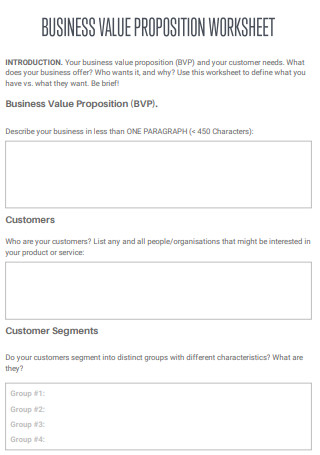
Business Value Propositions Worksheet
download now -

Value Propositions and Networking Worksheet
download now -
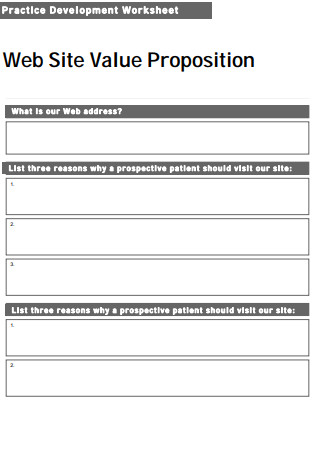
Website Value Propositions Worksheet
download now -
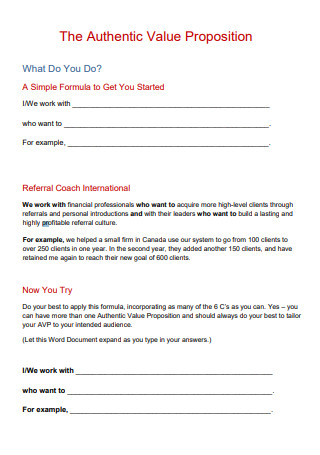
Authentic Value Propositions Worksheet
download now -
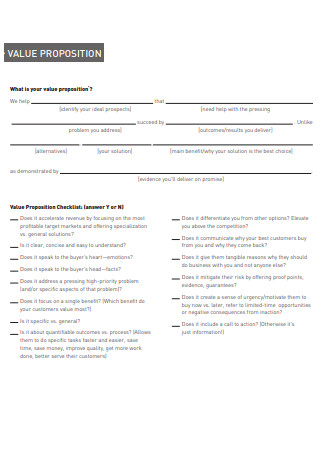
Value Proposition Worksheet And Checklist
download now -
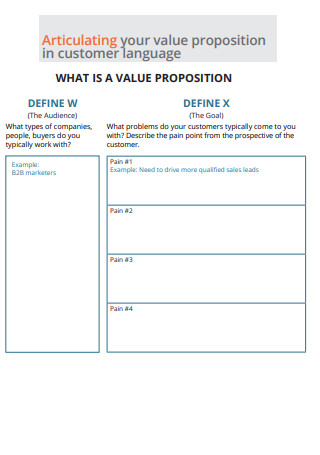
Value Proposition Worksheet Template
download now
FREE Value Proposition Worksheet s to Download
30+ SAMPLE Value Proposition Worksheet
What Is a Value Proposition Worksheet?
The Types of Value Propositions
Components of a Value Proposition Worksheet
How To Write a Value Proposition From the Value Proposition Worksheet
FAQs
How do you write a value proposition?
What is a personal value proposition?
What makes a good employee value proposition?
Another crucial element that contributes to the company’s success is its ability to identify, express, and communicate its value proposition to consumers. The company’s unique value proposition primarily functions as a marketing tool. A value proposition worksheet proves helpful in communicating with customers, and it’s best to utilize it for marketing plans. Read through the article to learn more about these documents, including their definition, components, and structure.
What Is a Value Proposition Worksheet?
A value proposition is a statement that describes a promise of value to its consumers from offering its services and products. It also sets itself apart from other competitors by defining the advantages and benefits of choosing its merchandise. A value proposition is part of a company’s marketing strategy and mission statement. As a marketing strategy, it is a summarization of the advantages of purchasing products or availing services. The significance of a value proposition extends to adding more value or a potential solution to customers availing the company’s offers. As such, a value proposition worksheet allows the company to identify and highlight a company’s strengths, customer expectations, defined objectives, and necessary keywords to emphasize the company’s statement.
According to an article published in Forbes in July 2015 entitled ‘Successful Businesses Have A Strong Value Proposition. What’s Yours?’, an exceptional example of an effective value proposition comes from Career Steps, wherein their statement brought about a job placement opportunity rate of 90 percent for their graduates. Their strategy was to offer education in high-growth industries, including medical coding, billing, and transcription.
The Types of Value Propositions
A value proposition is the company’s way of saying our products are better and will benefit you as customers after you make your purchase. However, value propositions can give various reasons for your customers to avail a company’s product or service, each one with advantages and disadvantages. Below are fundamental value propositions organizations utilize for their businesses.
Components of a Value Proposition Worksheet
Value propositions are an integral part of a company’s identity and existence. Preparing the value proposition helps every individual in the company to understand the business purpose and produce consistent and quality marketing materials. Below are the elements visible on a value proposition worksheet to help the company develop a value proposition statement.
How To Write a Value Proposition From the Value Proposition Worksheet
A value proposition has three main components, namely the heading, sub-heading, and visual elements. Each of these components comes from derived answers in the value proposition worksheet. Using the information from filing in the worksheet, here are essential steps you take to create the value proposition for the company.
Step 1: Conduct Market Research and Analysis To Determine the Value Proposition of Competitors
The value proposition is the unique factor that sets the company apart from its industry competitors. It is necessary to research the value proposition of your closest competitors. Using the value proposition worksheet and the information in it helps determine how the company meets the needs of the buyer market. It can be tempting to focus on areas competitors flourish and improve on them. However, it is best to tailor your product or service proposition to fit your consumer market.
Step 2: Explain the Value of Products and Services
Outline the features and benefits of the company’s products and services, highlight what they offer to your customers. The next step is a tactic that companies must utilize to maximize their value proposition. By meeting the product or service benefits to the offers and relating them to specific values of customers, it is easier to align what the business provides to customer needs.
Step 3: Identify Customer Benefits When Purchasing Products or Services
The next step to creating the value proposition of the company focuses on including details of how the product or service benefits your customers. It helps to provide visual aids like photos, graphs, diagrams, and pictures to support the claims. Using videos and live demonstrations are most effective to illustrate the value proposition shows customers what to expect from the incurred services or product by the business.
Step 4: Develop a Unique Value Proposition
As the company focuses on marketing efforts to cater to a particular target audience, you will discover that your consumers possess various needs based on their consumer behavior. Buyer personas classify a larger scale of the customer market into smaller groups with similar desires, tastes, goals, demands, and purchasing behavior. For each group, you need to compose a unique value proposition. A product or service you offer can solve a certain consumer and satisfies their wants better than others. That is why it is vital to tailor a value proposition for each buyer persona.
Step 5: Test the Value Propositions to Your Sample Audience
Finally, experiment on the value propositions you have through various marketing channels. These coined tactics are internally produced and developed by the marketing team to validate their effectiveness to a particular audience. The value propositions are then put on the company’s website, social media sites, videos, photos, events, and other means of communication. It is vital to test the propositions on existing and non-customers, taking in their feedback to implement the necessary revisions to finalize the value proposition.
FAQs
How do you write a value proposition?
In writing a value proposition for your company, it is critical to remember that you are making a promise to your consumers and providing them with the best product or service to address their needs. To start writing a value proposition, you must:
- Identify the consumer market’s main problem
- Outline and highlight all the benefits your product or service provides
- Define how these benefits make the company’s products or services valuable
- Connect the intended value to the consumer market’s problem
- Differentiate the company as unique from other competitors
What is a personal value proposition?
A personal value proposition is a statement or letter that describes an individual’s ability, experience, and expertise that makes a person different and unique from other candidates that makes them a valuable addition to the company. It helps outline a person’s strengths to express how they will be the best for the team. Personal value propositions, much like a business value proposition, must be brief and catch the reader’s attention while differentiating the person from competitors.
What makes a good employee value proposition?
An employee value proposition is a statement describing the variety of characteristics and benefits of working in a company. It is a promise between the organization and an employee in exchange for their productivity, contribution, and performance. An efficient employee value proposition must be consistent with the objectives of the company and demonstrate its uniqueness.
A value proposition is a way to influence a target audience into availing of products or services. Creating a compelling value proposition for your company provides a distinct difference between competitors, attracts the right opportunities, improves customer understanding and engagement, and provides a clear message to the target market. Start creating your company’s value proposition by filling out a value proposition worksheet to improve your message. Download and use the various value proposition worksheet samples and set a unique yet promising statement for your consumers.
